N1-(4-Chlorophenyl)benzene-1,2-diamine
Synonym(s):2-Amino-4′-chlorodiphenylamine
- CAS NO.:68817-71-0
- Empirical Formula: C12H11ClN2
- Molecular Weight: 218.68
- MDL number: MFCD00007686
- EINECS: 272-391-8
- SAFETY DATA SHEET (SDS)
- Update Date: 2024-01-30 15:53:50
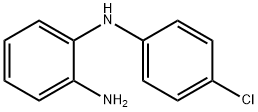
What is N1-(4-Chlorophenyl)benzene-1,2-diamine?
The Uses of N1-(4-Chlorophenyl)benzene-1,2-diamine
N-(4-Chlorophenyl)-1,2-phenylenediamine is a reagent in the synthesis of clofazimine analogs as antileishmanials and antiplasmodials.
The Uses of N1-(4-Chlorophenyl)benzene-1,2-diamine
N-(4-Chlorophenyl)-1,2-phenylenediamine (2-Amino-4′-chlorodiphenylamine) was used in preparation of N-(p-chloro)phenylbenzimidazolin-2-one and monoaminophenazine dyes.
Synthesis
To a mixture of EtOH (100 ml) and NH4C1 saturated solution (15 ml), N-(4-chlorophenyl)-2-nitrobenzenamine (5.0 g, 20.1 mmol) was added, followed by iron powder (4.0 g). The reaction mixture was heated at 70 °C for 2h. The solid was filtered, and the filtrate was extracted by EA (100 mL x 3) and dried over Na2S04. After the solvent was removed, the mixture was purified by Combi-flash (PE: EA = 5 : 1) to give N1-(4-Chlorophenyl)benzene-1,2-diamine (4.1 g, 93.2 percent) as a light yellow solid.
Properties of N1-(4-Chlorophenyl)benzene-1,2-diamine
| Melting point: | 117-119 °C(lit.) |
| Boiling point: | 357.0±27.0 °C(Predicted) |
| Density | 1.288±0.06 g/cm3(Predicted) |
| storage temp. | Keep in dark place,Inert atmosphere,Room temperature |
| pka | 4.90±0.10(Predicted) |
| InChI | InChI=1S/C12H11ClN2/c13-9-5-7-10(8-6-9)15-12-4-2-1-3-11(12)14/h1-8,15H,14H2 |
Safety information for N1-(4-Chlorophenyl)benzene-1,2-diamine
| Signal word | Warning |
| Pictogram(s) |
 Exclamation Mark Irritant GHS07 |
| GHS Hazard Statements |
H315:Skin corrosion/irritation H319:Serious eye damage/eye irritation H335:Specific target organ toxicity, single exposure;Respiratory tract irritation |
| Precautionary Statement Codes |
P261:Avoid breathing dust/fume/gas/mist/vapours/spray. P264:Wash hands thoroughly after handling. P264:Wash skin thouroughly after handling. P271:Use only outdoors or in a well-ventilated area. P280:Wear protective gloves/protective clothing/eye protection/face protection. P302+P352:IF ON SKIN: wash with plenty of soap and water. P305+P351+P338:IF IN EYES: Rinse cautiously with water for several minutes. Remove contact lenses, if present and easy to do. Continuerinsing. |
Computed Descriptors for N1-(4-Chlorophenyl)benzene-1,2-diamine
| InChIKey | WEUBIWJPIRTWDF-UHFFFAOYSA-N |
| SMILES | C1(NC2=CC=C(Cl)C=C2)=CC=CC=C1N |
N1-(4-Chlorophenyl)benzene-1,2-diamine manufacturer
Ralington Pharma
BEC Chemicals Pvt Ltd
New Products
Tert-butyl bis(2-chloroethyl)carbamate (S)-3-Aminobutanenitrile hydrochloride N-Boc-D-alaninol N-BOC-D/L-ALANINOL N-octanoyl benzotriazole 3-Morpholino-1-(4-nitrophenyl)-5,6-dihydropyridin- 2(1H)-one Furan-2,5-Dicarboxylic Acid Tropic acid Fmoc-Val-Cit-PAB DIETHYL AMINOMALONATE HYDROCHLORIDE 1,1’-CARBONYLDIIMIDAZOLE R-2-BENZYLOXY PROPIONIC ACID 1,1’-CARBONYLDI (1,2-4 TRIAZOLE) N-METHYL INDAZOLE-3-CARBOXYLIC ACID (2-Hydroxyphenyl)acetonitrile 4-Bromopyrazole 5-BROMO-2CYANO PYRIDINE 5-broMo-2-chloro-N-cyclopentylpyriMidin-4-aMine 2-(Cyanocyclohexyl)acetic acid 4-methoxy-3,5-dinitropyridine 2-aminopropyl benzoate hydrochloride 1-(4-(aminomethyl)benzyl)urea hydrochloride tert-butyl 4- (ureidomethyl)benzylcarbamate diethyl 2-(2-((tertbutoxycarbonyl)amino) ethyl)malonateRelated products of tetrahydrofuran
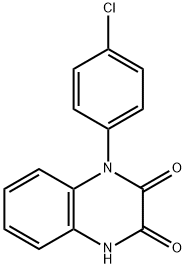

![CLOFAZIMINE, [METHYL-3H]](https://img.chemicalbook.in/StructureFile/ChemBookStructure4/GIF/CB4315311.gif)
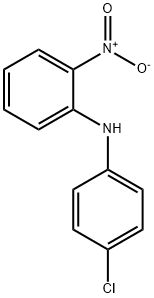
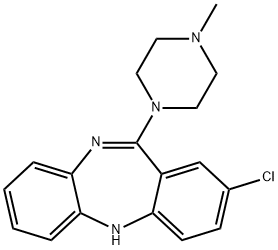

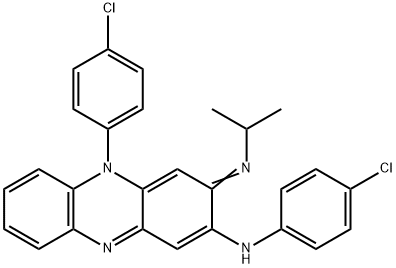

You may like
-
 68817-71-0 N-(4-chlorophenyl)-1,2-phenylenediamine 98%View Details
68817-71-0 N-(4-chlorophenyl)-1,2-phenylenediamine 98%View Details
68817-71-0 -
 68817-71-0 98%View Details
68817-71-0 98%View Details
68817-71-0 -
 N-(4-Chlorophenyl)-1,2-phenylenediamine 98%View Details
N-(4-Chlorophenyl)-1,2-phenylenediamine 98%View Details
68817-71-0 -
 N-(4-Chorophenyl)-1,2-benzenediamine 68817-71-0 98%View Details
N-(4-Chorophenyl)-1,2-benzenediamine 68817-71-0 98%View Details
68817-71-0 -
 N-(4-Chorophenyl)-1,2-benzenediamine 68817-71-0 99%View Details
N-(4-Chorophenyl)-1,2-benzenediamine 68817-71-0 99%View Details
68817-71-0 -
 N-(4-Chlorophenyl)-1,2-phenylenediamine 95% CAS 68817-71-0View Details
N-(4-Chlorophenyl)-1,2-phenylenediamine 95% CAS 68817-71-0View Details
68817-71-0 -
 N-(4-Chlorophenyl)-1,2-phenylenediamine CAS 68817-71-0View Details
N-(4-Chlorophenyl)-1,2-phenylenediamine CAS 68817-71-0View Details
68817-71-0 -
 733039-20-8 5-broMo-2-chloro-N-cyclopentylpyriMidin-4-aMine 98+View Details
733039-20-8 5-broMo-2-chloro-N-cyclopentylpyriMidin-4-aMine 98+View Details
733039-20-8